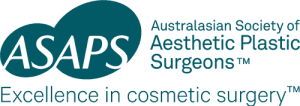By Dr Rodrigo Teixeira, FRACS (Plas) – Specialist Plastic Surgeon
Rhinoplasty, commonly referred to as a nose job, is a popular surgical procedure that has been around for decades. However, new trends in rhinoplasty are emerging and gaining traction in the medical community.
In particular, there is a growing interest in the comparison between the traditional structural approach to rhinoplasty, and the newer preservation approach. Preservation rhinoplasty has been on the rise in recent years, with a 14% increase from 2018 to 2019, as reported by the American Society of Plastic Surgeons. In this blog post, we will explore the differences between the two approaches and discuss the benefits and drawbacks of each.
Preservation Rhinoplasty: What it is and How it Works?
Preservation rhinoplasty has become increasingly popular in recent years due to its less invasive approach, which preserves the natural structures of the nose as much as possible while still achieving the desired aesthetic changes. It involves careful manipulation of the nasal structures to achieve remodelling without compromising the stability or function of the nose.
This approach can be particularly beneficial for individuals who desire subtle enhancements or have specific functional or aesthetic concerns.
Some studies have suggested that there is less risk of developing breathing problems after preservation rhinoplasty because this technique avoids removing too much nasal tissue, which can narrow air passages. In addition, preservation rhinoplasty typically involves minimal alteration of the nasal bones, which may result in less bruising and swelling during recovery compared to other surgical methods.
Preservation rhinoplasty can be particularly beneficial for patients who have thin skin and soft tissue cover or that are at risk of developing a weakened nasal structure.
However, it is essential to consult with a qualified surgeon who is experienced with this technique to determine if preservation rhinoplasty is suitable for your specific needs. They will be able to assess your case and guide you towards the most appropriate approach for your desired outcome.
Balancing Preservation and Structural Approaches
When considering rhinoplasty, it’s important to find the right balance between preservation and structural approaches. While structural rhinoplasty can achieve dramatic results, preservation rhinoplasty has gained popularity due to its more subtle changes that still create a more natural-looking appearance.
The structural rhinoplasty approach involves removing or reshaping existing nasal cartilage and bone to create a more desirable appearance. This technique is typically reserved for cases where preservation rhinoplasty would not achieve the desired outcome, or is by default the surgeon’s preference. This technique works on the structure to provide essential support and resist deforming forces or scar contracture. Cartilage grafts obtained from the nasal septum, or from ribs in difficult cases, are used to stabilise the nasal framework.
Balancing these approaches requires careful consideration of factors such as your existing anatomy, medical history, desired outcomes, potential risks, and the expertise of the surgeon. Additionally, understanding the potential need for rhinoplasty revision or the duration of rhinoplasty recovery can help in making an informed decision.
The Hybrid Approach
The hybrid approach to rhinoplasty surgery incorporates principles from both preservation and structural approaches, making it a versatile and effective technique. It takes a stepwise approach to tissue release and excision, allowing for the preservation of tissue while still achieving the desired surgical goals.
One of the key aspects of the hybrid approach is its focus on preserving tissue on the nasal dorsum, including the nasal bones and cartilages of the nasal dorsum.
In some cases, the hybrid approach may also involve the selective tissue excision and use of cartilage grafting to add support to areas of weakness or address issues such as septal deviation, and internal or external nasal valve collapse. This combination of tissue preservation and targeted tissue manipulation offers a balanced and comprehensive solution for individuals seeking to enhance both the appearance and function of their noses.
Which Approach is Right for You? Factors to Consider
When deciding which approach to choose for your rhinoplasty surgery, there are several important factors to consider. First and foremost, it’s crucial to have a comprehensive assessment of your existing anatomy and a clear understanding of your desired outcome. It must take into account your previous medical history, including any non-surgical and surgical procedures, as well as any limitations found during the medical assessment and physical examination. If you have a history of previous trauma or surgery, have severe nasal deviation or you’re looking for dramatic changes, the structural approach may be more suitable.
However, if you prefer subtle changes and a more natural result with potentially reduced risk, preservation rhinoplasty may be the better option.
While advances in technology have made modern rhinoplasty safer and more precise than ever before, it remains essential for patients to choose a qualified and experienced surgeon who understands their needs and provides balanced advice while minimising risks and complications.
The decision to undergo rhinoplasty surgery, risks and potential complications
The decision to undergo rhinoplasty surgery should not be taken lightly. While the potential benefits of the procedure can be exciting, it is important to remember that all surgery carries risks and complications are possible. Rhinoplasty surgery carries potential risks and complications, such as infection, bleeding, anaesthesia complications, scarring, breathing problems, or unsatisfactory cosmetic results. Even with the best care and medical expertise, there is no guarantee of the desired results.
It is crucial to have realistic expectations and understand that results can vary from person to person. Rhinoplasty can address a variety of concerns, such as nose deviation, a bulbous tip, nasal breathing issues, enlarged turbinates, or nasal asymmetry. It’s essential to keep in mind that while rhinoplasty can enhance your nose’s appearance and function, it cannot alter your facial proportions or make you look like a different person.
Remember, the decision to undergo rhinoplasty surgery should be taken seriously. It is important to carefully consider the potential risks and complications and weigh them against the desired outcome. By working closely with a qualified surgeon and having realistic expectations, you can make an informed decision that is right for you.
Recovery and Aftercare Tips for Rhinoplasty Surgery
Taking care of yourself during the recovery period is crucial for a successful rhinoplasty surgery. Follow your surgeon’s instructions regarding wound care, medication, and activity restrictions. Avoid strenuous activities, smoking, and wearing glasses on your nose. Use cold compresses to reduce swelling and bruising and elevate your head while sleeping to help with drainage. Stay hydrated, eat a nutritious diet, and get plenty of rest. Remember, patience is key – give yourself time to heal and be gentle with your nose.
All invasive surgery carries risk and requires a recovery period and care regime. Be sure you do your research and seek a second opinion from an appropriately qualified Specialist Plastic Surgeon before proceeding. Any details are general in nature and are not intended to be medical advice or constitute a doctor-patient relationship.
Dr Rodrigo Teixeira (MED0001650480) Registered medical practitioner, specialist plastic surgeon (specialist registration in surgery – plastic surgery) can be contacted at www.rteixeira.com.au or www.unveil.com.au

